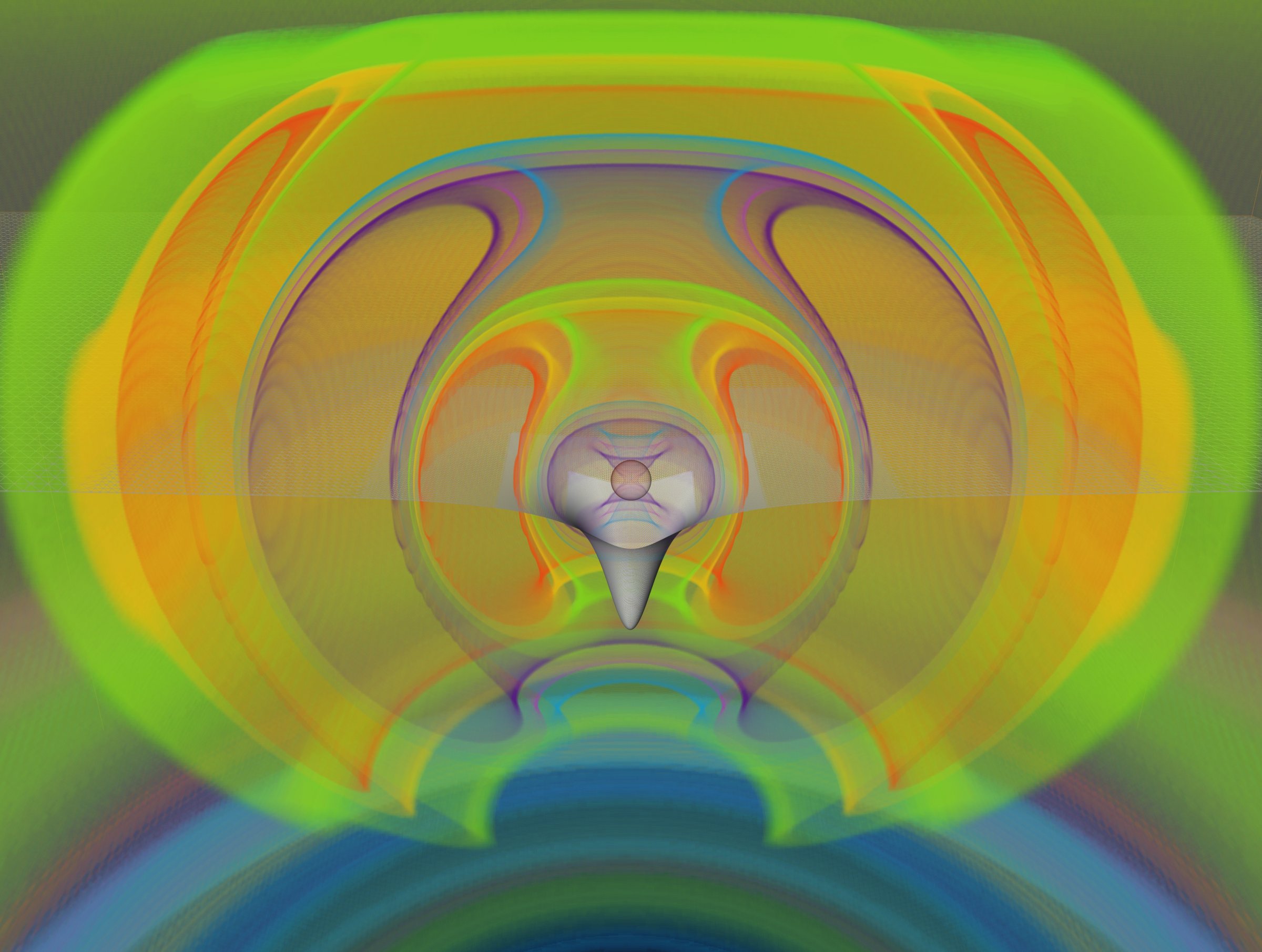January 10, 2018
How massive can neutron stars be?
Astrophysicists at FIAS and Goethe University set a new upper limit on the mass of neutron stars: it cannot be larger than 2.16 solar masses
FRANKFURT. Since their discovery in the 60's, scientists have worked on answering a crucial question: How massive do neutron stars actually get? Differently from black holes, in fact, these stars cannot be arbitrarily massive; past a certain finite limit in mass, no physical force in nature can contrast their enormous gravitational forces. For the first time, astrophysicists at Goethe University Frankfurt have succeeded in calculating a stringent upper bound on the maximum mass of neutron stars.
With a radius of about a dozen of kilometres and a mass that can be as large as twice the mass of the Sun, neutron stars are the densest objects in the Universe, producing gravitational fields that are comparable to those of black holes. While the majority of neutron stars have a mass around 1.4 times that of the Sun, we also know above very massive examples, as the pulsar PSR J0348+0432, measured to have 2.01 solar masses.
The densities of these stars are enormous and imply, for instance, that the whole mass of the Himalaya mountain chain would be compressed into a beer stein. Yet, we know that a neutron star with a mass equal to the maximum (or critical) mass would collapse to a black hole if even a single neutron were added. The problem, which has been open for more than 40 years, is that we do not know what this maximum mass actually is.
Physicist Prof. Luciano Rezzolla, Senior Fellow of the Frankfurt Institute for Advanced Studies (FIAS) and Professor of Theoretical Astrophysics at the Goethe University, and his students Elias Most and Lukas Weih, have now concluded that, with an uncertainty of a few percent, the maximum mass of nonrotating neutron stars cannot be much larger than 2.16 solar masses.
The researchers were able to combine “universal relations” with the data from gravitational-wave signal and the subsequent electromagnetic (or kilonova) emission collected during last year’s gravitational wave observation of two neutron stars merging, obtained by the LIGO experiment. The existence of "universal relations" imply that, in practice, all neutron stars can be made to "look alike" if their properties are expressed in terms of dimensionless quantities. This important result, which was obtained in Frankfurt a couple of years ago [http://www.goethe-university-frankfurt.de/60913695/15], simplifies the calculations enormously, making them independent of the equation of state, a theoretical description of the matter inside the star, and which provides information on the composition at the various depths in the star. As a result, the existence of a universal relation has been crucial to define the new tight constraint.
This result is a good example of the interplay between theoretical and experimental work. "The beauty of theoretical research is that it can make predictions. Theory, however, desperately needs experiments to narrow down some of its uncertainties", remarks Prof. Rezzolla. "It is therefore quite impressive that the observation of a single merger of a neutron star binary that occurred millions of light years away and the existence universal relations found theoretically, have allowed us to seriously constrain a riddle that has seen so many speculations in the past."
The results of this research have been published as a Letter on The Astrophysical Journal [ref here].Remarkably, groups from the USA and Japan have already confirmed the findings from Frankfurt, despite following rather different and independent approaches .
Gravitational-wave astronomy is expected to observe more of such events in the near future, both in terms of the gravitational-wave signal and in the more traditional electromagnetic bands, thereby further narrowing down the uncertainty of the maximum mass and thus improving our understanding of matter under extreme conditions, as those explored at modern particle accelerators such as CERN in Switzerland or the FAIR facility in Germany.
Publication:
Luciano Rezzolla, Elias R. Most, Lukas R. Weih: Using Gravitational-wave Observations and Quasi-universal Relations to Constrain the Maximum Mass of Neutron Stars, The Astrophysical Journal Letters, Volume 852, Number 2, http://iopscience.iop.org/article/10.3847/2041-8213/aaa401, DOI: 10.3847/2041-8213/aaa401
Further Information:
Prof. Luciano Rezzolla, Institut für Theoretische Physik, Campus Riedberg, phone: (069) 798 47871, rezzolla(at)th.physik.uni-frankfurt.de
